Are you curious to discover the rugged landscapes and bountiful wildlife on the hunt for a magnificent mule deer in Montana? Look no further as we begin our exploration into the realm of DIY Montana Mule Deer Hunts — an adrenaline-fueled adventure that is both exhilarating and deeply rewarding.
Montana has long managed the majority of deer units to provide an exceptional hunting experience. Its vast mountainous regions, sprawling against the horizon, are laced with deer hunting opportunities for trophy mule deer and whitetail buck.
The stakes are high, the thrill is even higher, and the diversity of landscapes caters to everyone, from first-timers to seasoned hunters.
In this article, we’re going to delve into the fundamental aspects of mounting your very own do-it-yourself (DIY) Mule Deer hunt in Montana. You’ll find everything from the gear you need to the best hunting spots to tips and tactics. We’ll even unlock the secrets to successful field dressing and meat preservation.
- Related article: Hunting Deer in Montana
So trust me, read on, it’s your first step on an unforgettable journey. And remember, the more prepared you are, the richer your experience will be.
7 Key Takeaways on DIY Montana Mule Deer Hunts
- Proper preparatory steps for a Montana mule deer hunt include undergoing hunter safety training, studying deer hunting regulations, gearing up, and planning food and accommodations.
- A comprehensive list of hunting gear, from firearms and ammunition to navigation tools and emergency supplies, is essential for a successful hunt.
- Recommendations for prime Montana deer hunting locations emphasize the need to understand local deer populations and access more isolated properties.
- Tactical bits of advice include using mule deer decoys, embracing spot-and-stalk techniques, tracking preferred food areas, and being mindful of wind directions.
- Step-by-step guidance on field dressing a mule deer along with tips on on-site processing and quick cooling to maintain meat quality is crucial for DIY hunters.
- Mule deer hunting requires a combination of skills, local knowledge, and realistic expectations.
- The experience of DIY mule deer hunting in Montana not only offers the thrill of the chase but also the satisfaction of preparing and consuming your harvest, forging lasting memories and connections with nature.
DIY Montana Mule Deer Hunting Guide
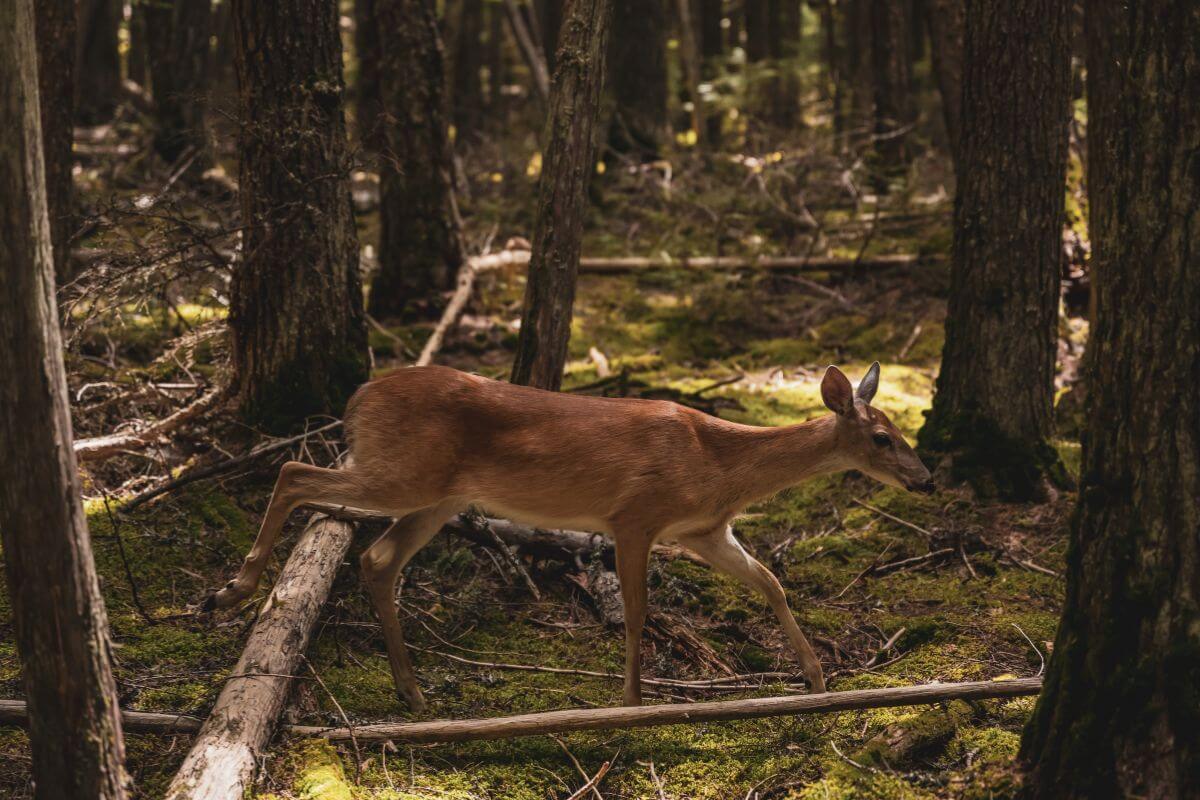
Mule deer are an iconic species in Montana’s landscape, and hunting them can be a thrilling adventure for the novice. However, it’s a complex pursuit requiring local knowledge, good physical condition, and skill.
In this guide, I’ll map out the essential steps and strategies for a successful mule deer hunt in Big Sky Country. We’ll cover essentials like scouting, and field dressing, along with some pro tips to enhance your hunting skills and increase your chances of a successful mule deer harvest in Montana.
1. Montana Mule Deer Hunting Gear
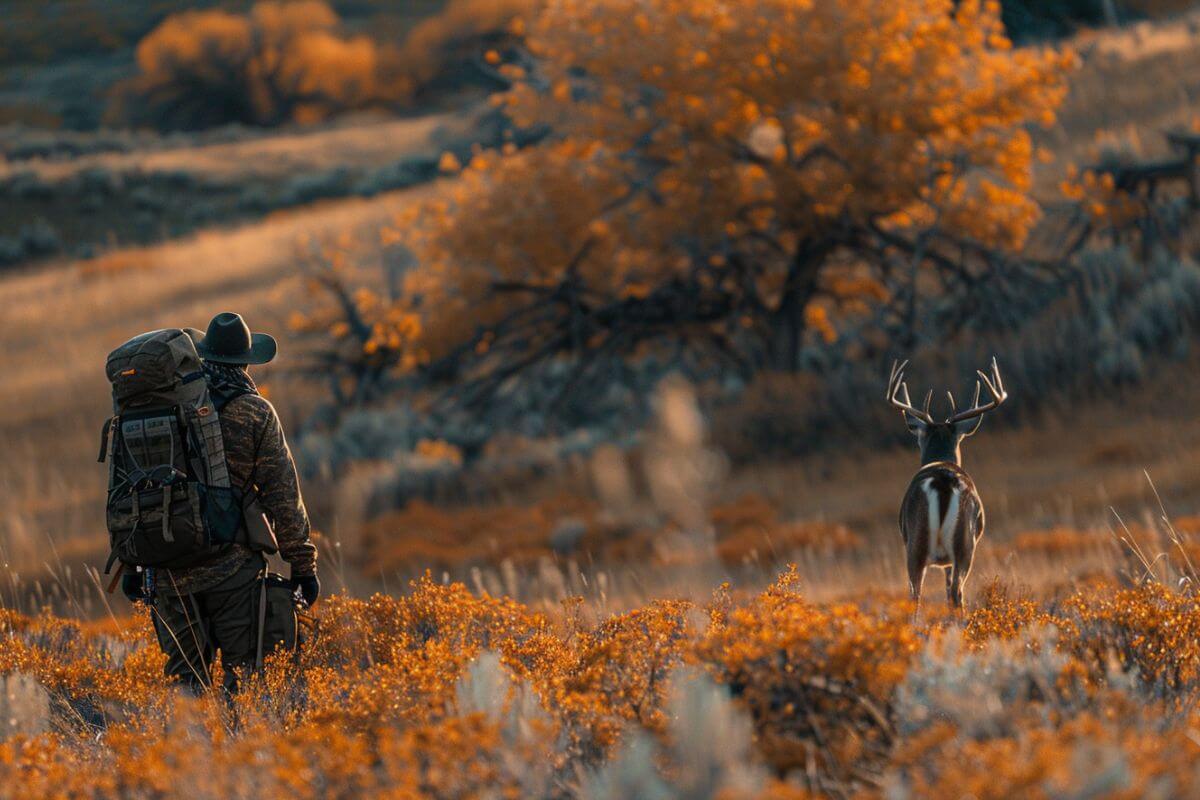
There’s no doubt that taking down a mature mule deer buck is a pretty tough feat, especially on publicly accessible land. So, as I’ve learned the hard way, it’s all about this trifecta: being in the right place, at the right time, with the right gear.
Now, let’s talk about the essentials that you – yes, you the aspiring mule deer hunter – need to arm yourself with:
- Rifle or Bow – Choose a caliber suitable for deer hunting, and ensure it’s highly accurate. For archery mule deer hunters, training with different arrow types and styles is crucial.
- Ammunition or Arrows – Load up on enough ammunition or arrows for your whole trip, plus some extra servings for those unexpected moments.
- Optics – Binoculars help you spot the deer from a distance, while a spotting scope gets you up close and personal. A reliable rangefinder is key for accurate distance measurement.
- Clothing – Camouflage attire designed for the season and weather conditions. Invest in layered clothing for temperature control and a waterproof, windproof jacket and pants. Don’t forget the blaze orange gear.
- Footwear – A pair of sturdy and comfortable hunting boots are non-negotiable. Gaiters will help keep pesky debris out of your boots.
- Backpack – Make sure it’s durable and can fit all your essentials during the hunt.
- Navigation – A GPS device or good old map and compass will stop you from getting lost. Topographical maps of the hunting area? Check!
- Camping Gear – A lightweight tent, sleeping bag, and pad. Portable stove and cookware – because hunting fuels you.
- Food and Water – Pack lightweight and high-energy food. Carry a sufficient water supply or water purification tools. Hydration is key.
- Field Dressing Kit – Skincare, deer-style. This includes a skinning knife, gutting knife, bone saw, and game bags for proper meat storage.
- First Aid Kit – Just the basics for injuries or emergencies. No need to travel with a mobile ER.
- Personal Essentials – Don’t forget your hunting license, headlamp or flashlight, and some extra batteries.
- Emergency Supplies – Two-way radios or a satellite communication device. Emergency whistle and signal mirror, in case things get hairy.
- Camera or Smartphone – You might need to boast your catch. Capture those memories and perhaps your hunting-mule-deer journey might inspire someone else.
Hunting isn’t only about the gear; it’s also about preparedness, patience, and perseverance on the field. Your equipment serves as the conduit to achieve the goals.
So, are you ready to literally put yourself in the shoes – or rather boots – of a Montana mule deer hunter? Get your gears in check and step foot into the wilderness. This deer season, let’s make it count!
2. Montana Mule Deer Hunting Best Spots
When it comes to finding your target mule deer, the eastern side of Montana rules the roost. This area features a mix of private land and accessible hunting grounds under Block Management.
However, the mule deer population is not evenly distributed. The eastern and central parts of the state have shown a significant decline, especially on public land. In contrast, the mule deer herds in Western Montana are smaller but more stable.
For a bumper mule deer day, your best locations in Montana include:
| Hunting Area | Location | Notable Features |
| Bitterroot Valley | Southwestern Montana | Trophy quality buck hunting hotspot with unit 270 as one of the top trophy mule deer units. |
| Badger-Two Medicine Area | Rocky Mountain Front | Thousands of acres within the Rocky Mountain Front. |
| Lewis & Clark National Forest | West-central Montana | Known for mule and quality whitetail buck, as well as exceptional elk hunting. |
| Bob Marshall Wilderness | Western Montana | Vast expanse with good mule deer hunting opportunities. |
My top tips for finding the best spots for mule deer hunting in Montana:
- Research your chosen spots to understand local deer populations and hunting regulations.
- Look beyond public land; block Management offers access to private hunting properties.
- Be prepared to work harder for your prize in Eastern Montana due to population declines.
- Consider Western Montana if you’re after stable but smaller herds.
Small herds might mean less competition, while abundant herds offer more decent chances to spot that trophy buck. Wherever you choose, Montana’s public land access and sprawling hunting lands ensure there’s plenty of deer and miles to roam.
3. Montana Mule Deer Hunting Tips
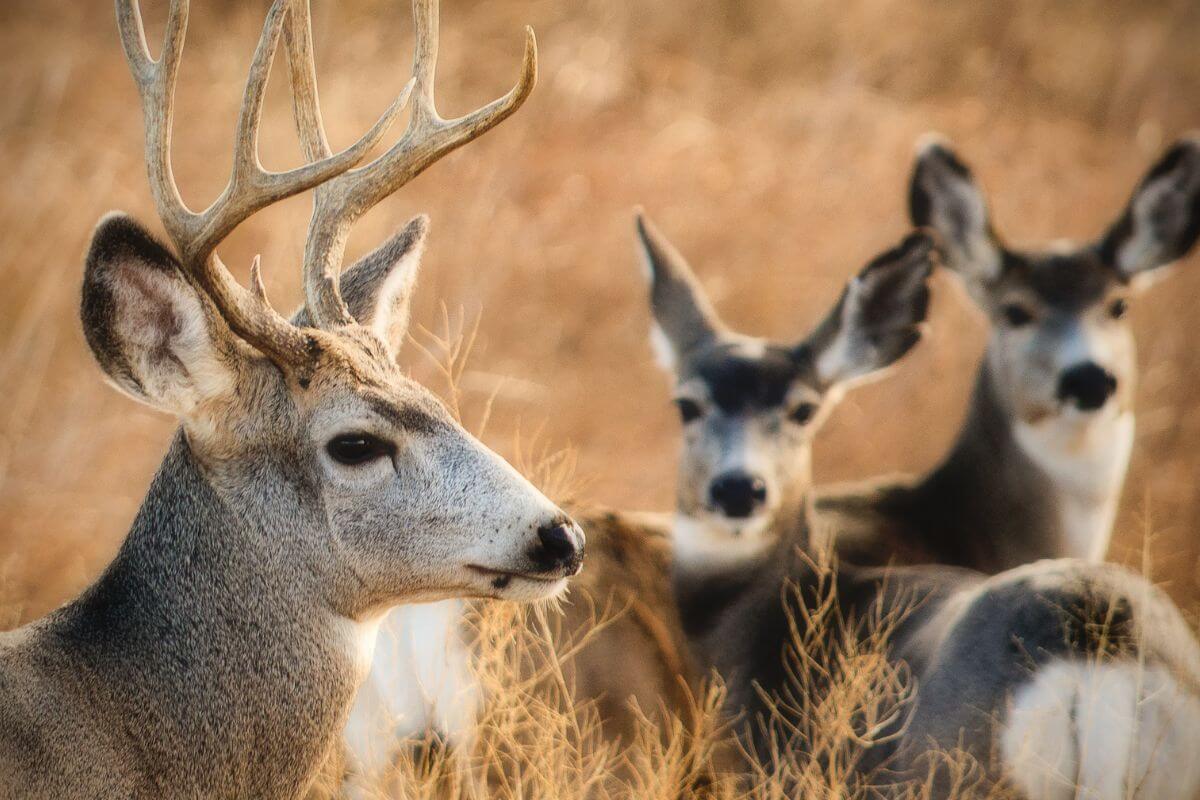
If you’re planning a mule deer hunting trip in Montana, there are a few things you should know. It’s not just about having good aim and vision. The state is vast and rugged, and mule deer hunting can be a challenging and exciting experience.
To have an excellent chance at a successful DIY mule deer hunt in Montana, here are some essential tips and strategies:
- Research and Scouting – Start by studying mule deer behavior and preferred terrain. Understand their habits and the best time to hunt them. Scouting and pre-planning your hunting area are key.
- Use Mule Deer Decoy Tactics – Mule deer are visual animals and using decoys can be a smart tactic. Whether it’s early season or during a rut, a well-positioned decoy is likely to divert their attention, giving you an excellent chance for a well-aimed shot.
- Embrace Spot-and-Stalk – The majority of hunting mule deer is through this. You aim to get close without being noticed, and a decoy can serve as a distraction. Spotting a group of does with a mature buck is a great starting point, then using calls and scents to add realism to your decoy setup can be incredibly effective.
- Focus on Preferred Foods Areas – Concentrate your glassing on areas with willows, shrubs, and other plants mule deer love. You’re more likely to find them in brushy hillsides and their preferred food areas.
- Time it Right – The rut is prime time for mule deer hunting. They’re much more active and easier to find for a larger part of the day.
- Try Still-Hunting and Ambush Techniques – Mule deer are curious and their preferred habitats make them well-suited to still-hunting. Focus on areas where they transition between feeding and resting, and consider ambush hunting at food patches or travel routes.
- Watch the Wind – Mule deer are sharp-sensed animals. Be mindful of the wind direction at all times. It’s often their nose that will foil your carefully laid plan.
- Hunt All Day – Finally, mule deer don’t adhere strictly to dawn and dusk activities, so hunting all day can pay off. Persistence is key. And I mean it, hunting all day increases your chances of that perfect shot.
When you go on a mule deer hunting trip in Montana, remember that success depends on your knowledge, skills, and appreciation for nature. Follow these tips, be ready for unexpected situations, and enjoy the company of other trophy hunters.
4. Montana Mule Deer Field Dressing and Processing
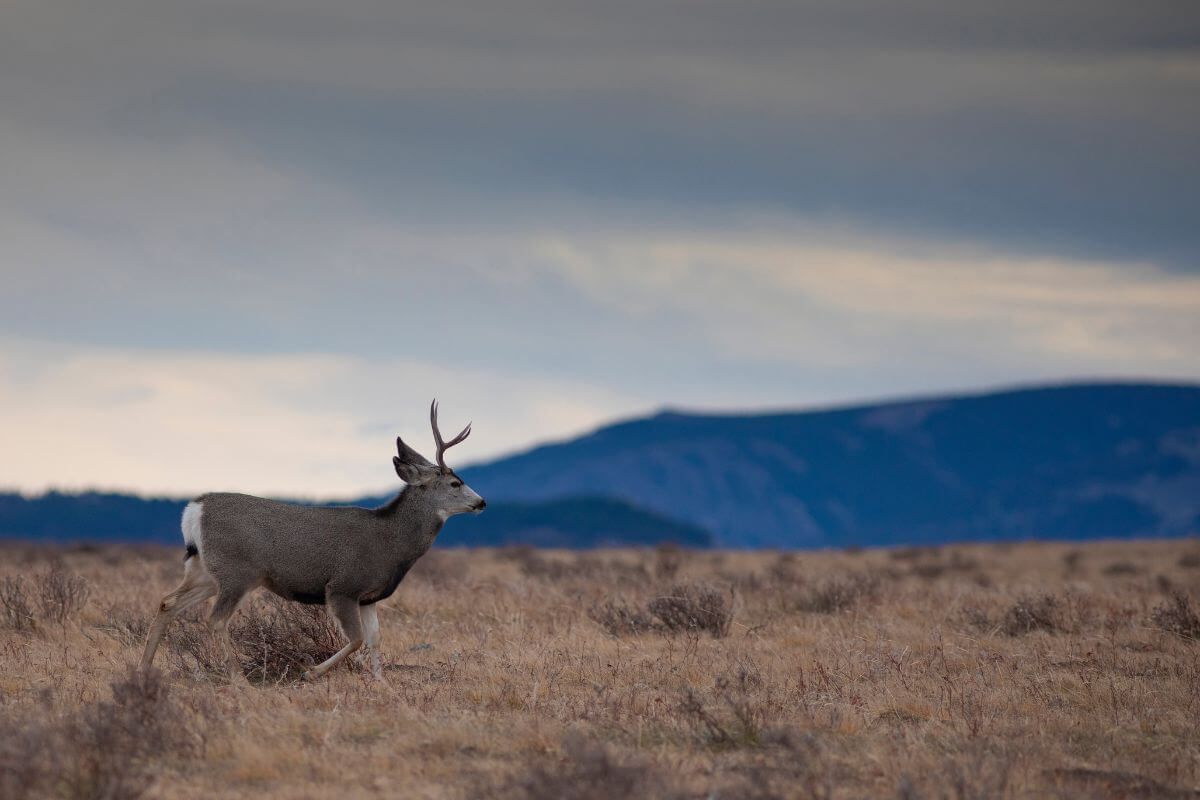
After an incredible deer hunt in Montana, field dressing your harvested mule deer is a crucial step to maintaining the meat’s quality. Here are the simplified steps:
- Cut Around the Anus – Start by cutting around the deer’s anus to free the colon.
- Unzip Your Buck – From the anus, make a shallow cut up to the breastbone.
- Saw Open the Chest Cavity – With a bone saw, carefully open the chest cavity.
- Cut the Diaphragm – Sever the diaphragm to free the heart, lungs, and liver.
- Cut the Windpipe – Cut the windpipe to make removal easier.
- Pull Everything Out – With the entrance cut, you can now pull the organs out.
Once the field dressing is complete, it’s important to handle the deer properly to preserve the meat for consumption. Here’s how:
- On-Site – If manageable, hang the deer for a few hours to let rigor mortis pass, making deboning easier.
- Triple Wrap – Once home, wrap the meat in plastic, then butcher paper, and finally vacuum seal.
- Quick Cool – For a fresh taste, cool the meat quickly after harvest. This could be with evaporative cooling, dry ice, or a dedicated walk-in cooler.
- Best Part – Separate the best cuts to ensure they’re prepared specifically, whereas the rest can be ground into flavorful burger meat.
Remember, properly processing your haul will ensure succulent meals and the most out of your hard-earned success. And better yet, some processors even offer the perfect butchering if you’re not up to the task.
Making precious memories of a successful hunt doesn’t just fall to the engagement with wildlife, but the hearty meals shared and the satisfaction of a job well done.
DIY Montana Mule Deer Hunts Final Thoughts
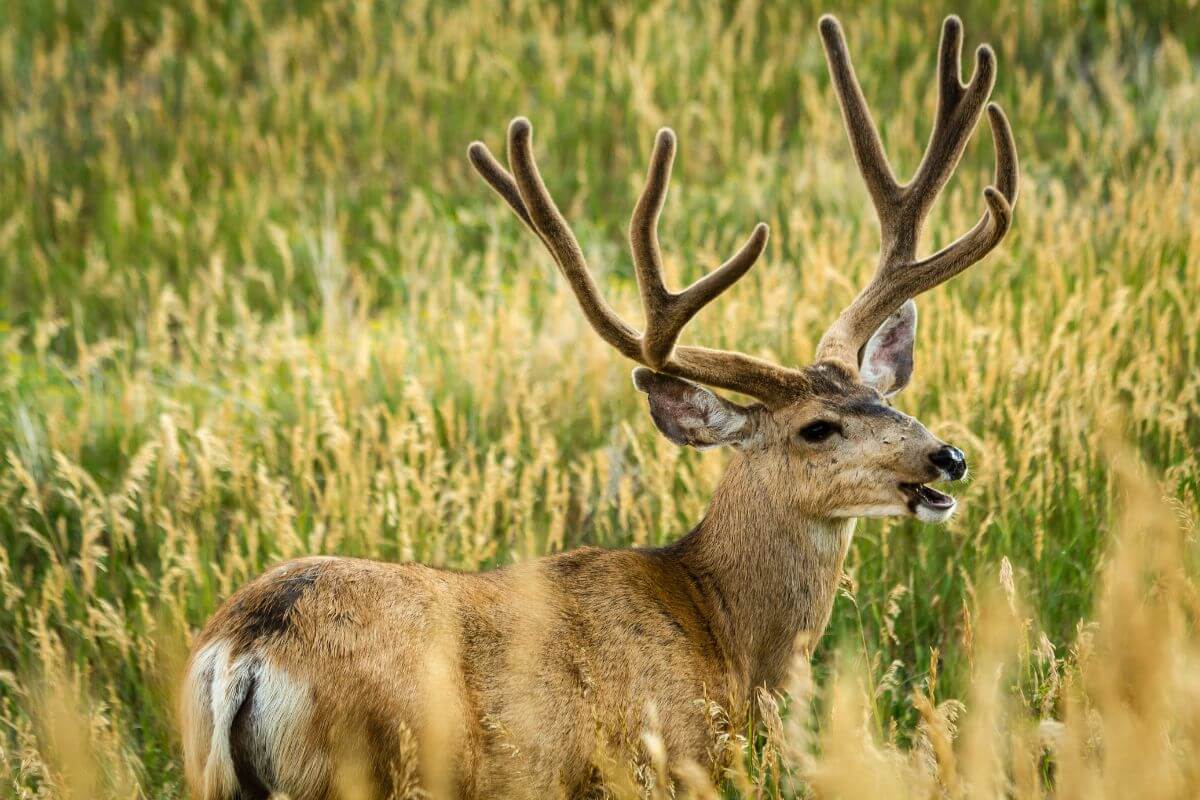
Embarking on a DIY mule deer hunting expedition in Montana is not just about chasing the thrill of the chase. As you navigate the sprawling landscapes of Big Sky Country, you’ll be forging a connection with the unique natural environment and a tradition ingrained deeply in Montana’s outdoor culture.
The key to a successful mule deer hunt additionally lies in detailed preparation, from proper gear selection to understanding local hunting regulations and wildlife behaviors. Each step, from the initial scout to the final field dressing, adds a layer of expertise and adventure to your journey.
Remember, mule deer hunting is not just a pastime; it’s a holistic experience that extends to the quality processing and sharing of your hard-earned harvest. These practices are also essential for sustainable hunting, respecting both wildlife and the environment.
Above all, your Montana mule deer hunt can offer deeply satisfying connections and unmissable memories, whether captured in a photograph or on the dinner table. So, gear up, seek local wisdom, and step into the Montana wilderness – your next mule deer adventure awaits!
DIY Montana Mule Deer Hunts FAQs
1. How Much Does a Montana Mule Deer Hunt Cost?
The expense of a Montana mule deer hunt can fluctuate greatly based on variables like the outfitter, the duration of the hunt, the type of hunt (guided or DIY), and the amenities provided. However, a guided mule deer hunt in Montana can cost anywhere from a few thousand dollars to several thousand dollars or more.
2. What Is the Best Unit to Hunt Mule Deer in Montana?
Unit 270 is often considered one of the best units to hunt mule deer in Montana, known for its high trophy potential, with hunters reporting the opportunity to encounter 20+ quality bucks per day. The deer in unit 270 includes those with scores exceeding 190 and 200 Boone and Crockett (B&C) inches.
3. What Is the Average Score for a Mule Deer in Montana?
The average score for a mule deer in Montana can vary, but mature bucks typically range from 140 to 160 Boone and Crockett (B&C) inches, with the potential for some individuals exceeding 180 inches, depending on factors such as age, genetics, and habitat quality.
4. Can You Buy Over-the-counter Mule Deer Tags in Montana?
Montana offers over-the-counter (OTC) mule deer tags for residents and non-residents. OTC tags are available for certain hunting districts, allowing hunters to purchase them without having to go through a draw or lottery system.
5. Can Non-Residents Hunt in Montana?
Yes, non-residents can hunt in Montana. They can purchase hunting licenses and tags for various species, including mule deer, based on the regulations set by Montana Fish, Wildlife & Parks.
Explore more insights about Montana by delving into our collection of related articles below:

